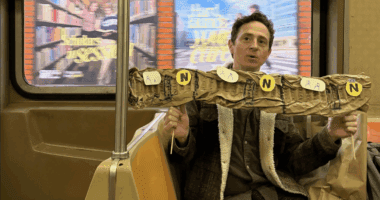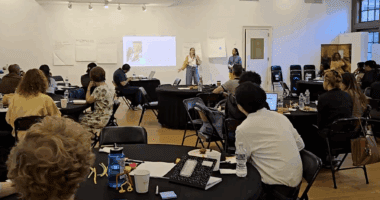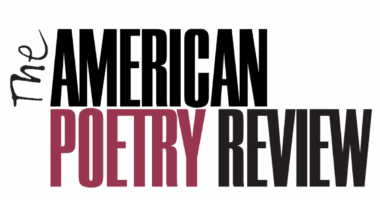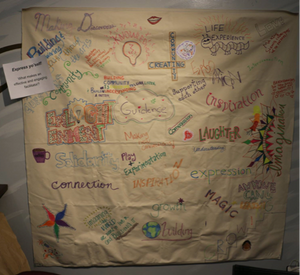
The Teaching Artist Project is a prime example of practicing what you preach. In participating in their workshops, I have learned holistic techniques that cater to many different modes of learning and information processing as well as methods of artistic expression. The facilitators always offer multiple ways to answer a question, solve a problem, and create a piece of self-reflection, such as one’s teaching philosophy.
As the course of my professional career has taken a slight turn during my time in TAP, I am still staying a part of this community because of its support and artistic pedagogy, which I plan to incorporate into an English Language Arts (ELA) classroom in NYC. In this way, I can still teach my craft of creative writing and expression through the written word and encourage students to enjoy learning while also meeting the Common Core Standards.
TAP facilitators have taught me how to create a lesson plan geared toward a larger social issue and using craft to learn about the issue and create in order to be heard. In the classroom, I want to present students with diverse texts that engage readers in these social justice movements and areas of marginalization; and with that, I can utilize those holistic, culturally responsive teaching techniques I have learned in TAP for my future students to better engage with a text and with their community at large.
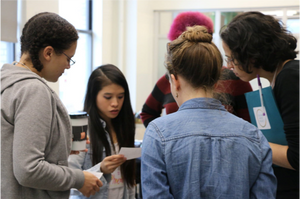
By emphasizing collaboration, students don’t have to read and comprehend texts alone. TAP reiterates working together and problem solving as a group. In our workshops, most activities are completed in small or large groups. This is to get the most out of everyone’s craft and way of interpreting and processing data. For students of various backgrounds, skill levels, and strengths, discussions can be a fruitful way not only to connect with peers but also to more deeply understand a text before refining their thoughts on the page or presenting them to the larger group.
While Common Core Standards can be met in the most traditional of ways, they can also be met by challenging students to think creatively and reflectively. At the heart of the ELA Standards are comprehension, inquiry, inference, analysis, vocabulary, and writing with proficiency. Students can demonstrate mastery of these Standards on paper and in the classroom, but the Standards can be buffered with assignments that meet the creative needs of students. Rather than reading, discussing, and regurgitating, students should have the opportunity to distill information from class or group discussions and then translate that newfound knowledge into various forms of expression. Learning is not a one-size-fits-all task but one that blooms when multiple options are permitted.
Courtney Luk is a current TAP trainee and a Partner Teacher through the NYC Teaching Collaborative. She writes young adult novels and poetry. You can follow her shenanigans on Twitter!

